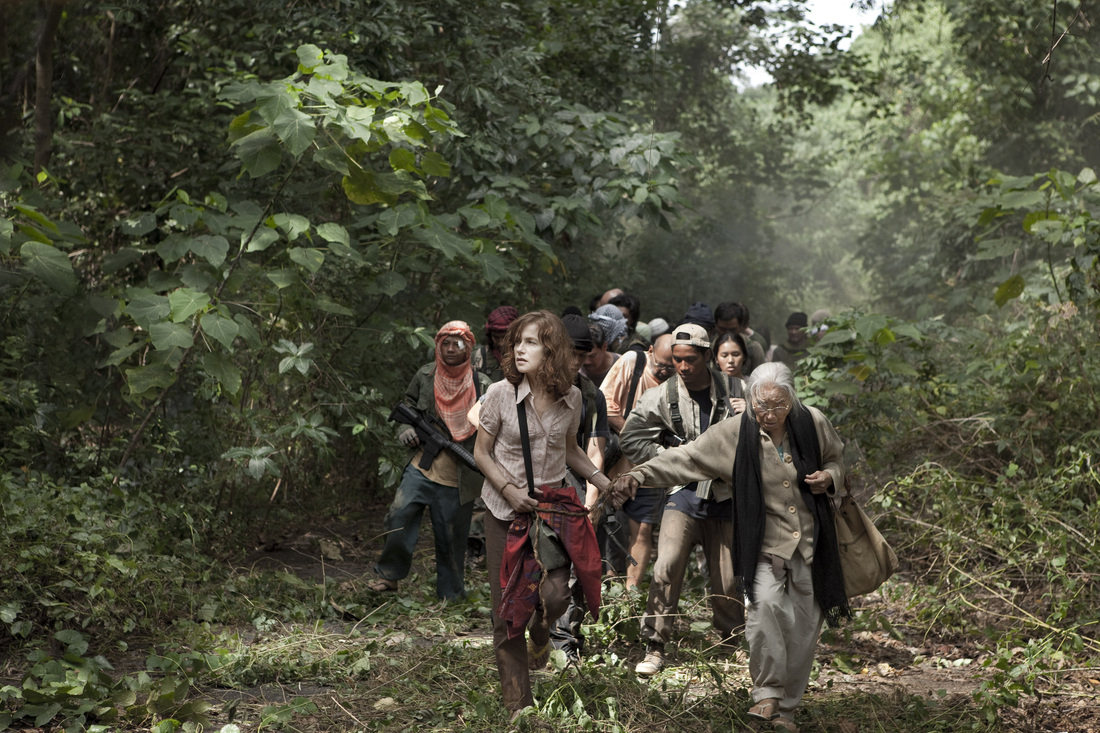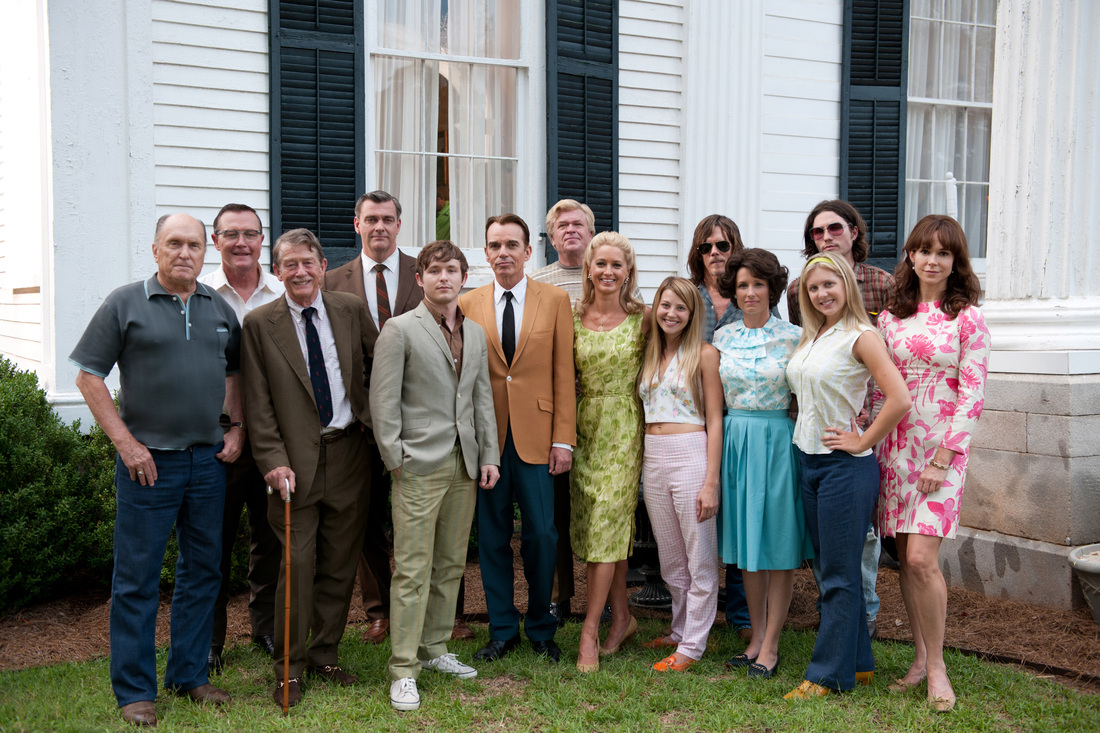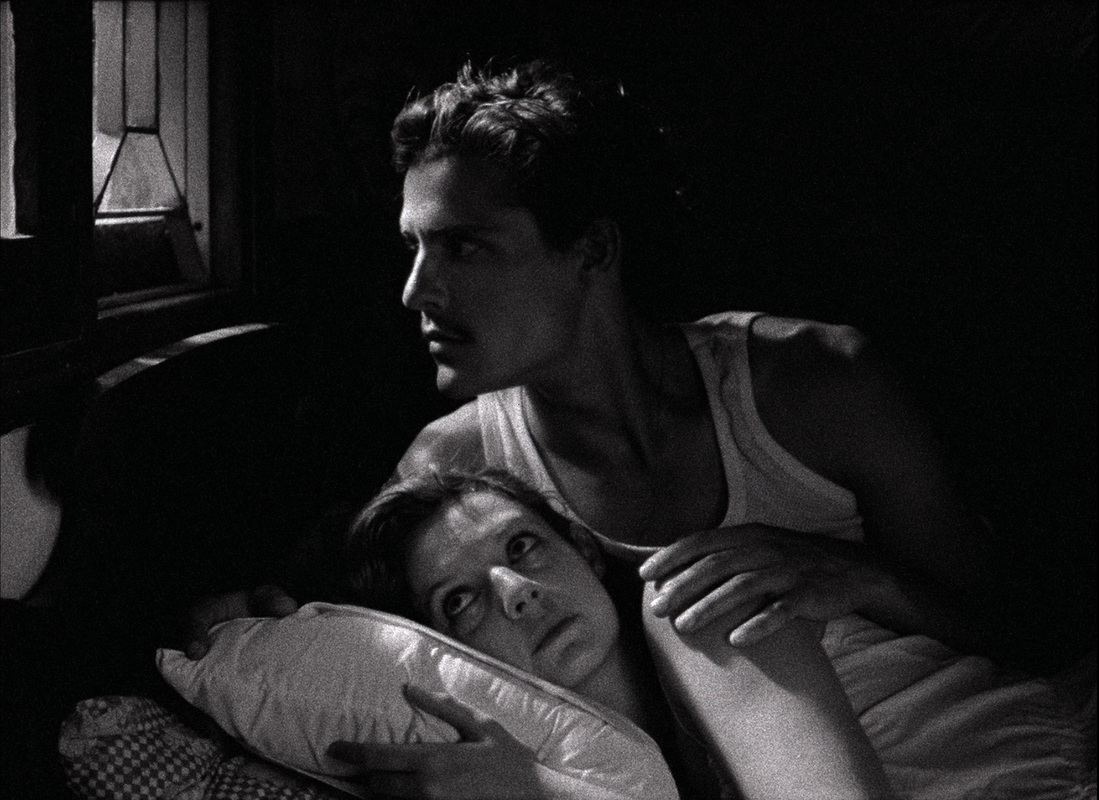16 March 2012
Here is the second part of my take on the Berlinale 2012 competition nominees.
(Click here for Part One)
Captive
Ahh, Isabelle Huppert. She gives me a warm feeling. Not that kind you sickos. (Well maybe a little of that kind.) Her addition to a film is a strange alchemy that adds class, mystery and charisma to a story almost instantaneously her presence is felt. However, Huppert is very much wasted here. Spending too much time screaming like Kate Capshaw in INDIANA JONES AND THE TEMPLE OF DOOM. A possibility perhaps of comedy gold you might be thinking, but this is a very serious and tragic tale of kidnapping in the Philippines, which commenced in May 2001. Based on a true story this is a harrowing film, where tourists, missionaries and medical staff are taken prisoner in order to obtain a ransom. We see it from these victims’ perspectives. The ordeal is well conveyed, however CAPTIVE outstays its welcome by being repetitive, and running out of ideas. Huppert’s gravitas saves this from being unwatchable. Not her best performance, though the script she appears to have been working with is to blame I surmise.
Meteora
“What colour is your hair?” Monk
“That is not for you to know,” Nun
A painting, and then a cut to the real landscape. A convent and a monastery on two mountaintops facing each other. There are plastic crates for food, so it’s the modern world. Nuns use a rope elevator to get themselves and their supplies home, and monks use a huge staircase. Live action is interspersed with stylised animation. This touch raises METEORA to a level of interest that the story alone might not have reached – though on paper it sounds like something out of racy novel: A monk falls for a nun. Even with barely a word spoken, there is frisson between them. It all might’ve been too salacious, with the director accused of a nun fetish - she is seen nude in close-up, but not the monk. Apart from that, the rest of the film is as much concerned with theology as with the human connection. The ending is surprising and welcome, and could suggest an unobvious spiritual reward.
(Click here for Part One)
Captive
Ahh, Isabelle Huppert. She gives me a warm feeling. Not that kind you sickos. (Well maybe a little of that kind.) Her addition to a film is a strange alchemy that adds class, mystery and charisma to a story almost instantaneously her presence is felt. However, Huppert is very much wasted here. Spending too much time screaming like Kate Capshaw in INDIANA JONES AND THE TEMPLE OF DOOM. A possibility perhaps of comedy gold you might be thinking, but this is a very serious and tragic tale of kidnapping in the Philippines, which commenced in May 2001. Based on a true story this is a harrowing film, where tourists, missionaries and medical staff are taken prisoner in order to obtain a ransom. We see it from these victims’ perspectives. The ordeal is well conveyed, however CAPTIVE outstays its welcome by being repetitive, and running out of ideas. Huppert’s gravitas saves this from being unwatchable. Not her best performance, though the script she appears to have been working with is to blame I surmise.
Meteora
“What colour is your hair?” Monk
“That is not for you to know,” Nun
A painting, and then a cut to the real landscape. A convent and a monastery on two mountaintops facing each other. There are plastic crates for food, so it’s the modern world. Nuns use a rope elevator to get themselves and their supplies home, and monks use a huge staircase. Live action is interspersed with stylised animation. This touch raises METEORA to a level of interest that the story alone might not have reached – though on paper it sounds like something out of racy novel: A monk falls for a nun. Even with barely a word spoken, there is frisson between them. It all might’ve been too salacious, with the director accused of a nun fetish - she is seen nude in close-up, but not the monk. Apart from that, the rest of the film is as much concerned with theology as with the human connection. The ending is surprising and welcome, and could suggest an unobvious spiritual reward.
|
|
|
Sister
A cross between a Dardennes brothers film and THE GRIFTERS, and that’s a good thing. Simon (Kacey Mottet Klein) is 12 years old and a thief. He steals from the wealthy at a ski resort in order that he and his sister, Louise (Léa Seydoux), can have enough money to eat. Louise is in her late twenties, but avoids any responsibilities in looking after him. Simon says their parents are dead. They live in a small apartment. The focus of the film is Simon, and Klein delivers, turning in a gripping performance as a ridiculously resourceful and charismatic kid. For all his toughness and savvy, one of the most memorable scenes is him paying Louise to allow him to sleep in the same bed and hug him – it is heartbreaking. Director Ursula Meier maintains a thorough tension, as we worry at Simon’s fate: Will he be abandoned? Taken into care? Beaten to a pulp for stealing? Have his spirit broken? SISTER is about survival (in many senses), parenting, and class. Well paced throughout until the conclusion, which doesn’t seem to know how to end. Also, an extended cameo from Gillian Anderson feels incongruous; maybe Meier is an X-FILES fan?
Jayne Mansfield’s Car
I get huge enjoyment from the extended-family-comes-together-for-the-evening/weekend subgenre. Billy Bon Thornton co-writes, directs and stars in a pretty entertaining, but messy and forgettable dramedy about not one, but two families meeting. They share a matriarchal figure, Naomi, who has died. She was once married to Robert Duvall’s Jim Caldwell, and they had three sons and one daughter: Skip (Thornton), Jimbo (Robert Patrick), Carroll (Kevin Bacon) and Donna (Katherine LaNasa). Naomi divorced Jim, and went to England to marry Kingsley Bedford (John Hurt). This broke her American men’s hearts, as they saw Naomi once in about six years. Kingsley has children of his own: Phillip (Ray Stevenson) and Camilla (Frances O'Connor). A lot of names, and an amazing cast! They all meet for her funeral, as her widower thought it right she be buried at her original home.
It is Morrison, Alabama, 1969. The Vietnam War and draft hangs over the younger generation; a conflict contrasted morally in the film with the Second World War, by the fact that the brothers are proud to have served, though damaged by it. (The civil rights movement is barely touched upon weirdly.) There are so many unresolved character conflicts that this paragraph could turn into a catalogue. I will avoid listing; that would probably dissipate the interest in watching. All I will say is that the film is primarily about fathers and sons, and their mutual disappoints in each other. JAYNE MANSFIELD’S CAR has charm but doesn’t seem to say much of note about anything. The ending is trite and sentimental, with the oddest coda that doesn’t sit right with what precedes.
Home for the Weekend
This is a silly little film, about a well off family meeting up for a few days, and mildly engaging secrets are revealed awkwardly. One son is splitting up from his wife, the other’s business is tanking, the mother has decided to stop taking her medication for depression, and the most striking is saved for last. The characters don’t make you care about their problems, and the drama is inert. HOME FOR THE WEEKEND says little about the human condition, and the ending is nonsensical. The depression aspect should have been explored with greater intelligence and originality. What is this doing in the Festival?
Tabu
A tedious and misfired first half derails a brilliant narrative device. In black & white and non-cinema aspect ratio, we first see Africa as if it’s being portrayed as a film within a film. Then we are in modern day Lisbon and meet some unengaging characters. The interactions are stilted and stylised and dull. The second half is silent, and narrated by Ventura looking back on his love for Aurora (who we met in the first part). This is colonial Africa, where Europeans lead a hedonistic lifestyle. We are meant to reappraise what has been witnessed early on, in light of what we learn in the latter part of TABU – an immensely satisfying idea, except that the filmmakers fluffed the modern day scenes. At least I do want to revisit the movie to see if I like it the second time round however. Not many cinematic experiences make you want to do that.
There’s more Berlinale goodness, click here for Part Three.







